By Jan Willms
The Great Depression was over long before Forrest Wozniak was born. But that time period serves as a backdrop to his career as a sign painter.
Wozniak, who was born and raised in South Minneapolis, said that as a kid coming of age in the ‘90s, he and his friends were exposed to a lot of vibrant color in the city. “Me and my friends would find rusty objects and paint them with garish designs and have art shows,” he recalled.
Simultaneously, Wozniak said he was inspired by the Woody Guthrie era. “You could ride the rails or hitchhike or travel across the country with a sign painting kit,” he said.
“I don’t have a traditional art upbringing and did not go to school for art,” Wozniak stated, “but I was inclined to do art my whole life growing up.” He started by working with a furniture company while still in high school. He built Scandinavian Modern furniture, now called router furniture. “It is really boxy, with built-in cabinets and drawers,” he explained. He worked in masonry, roofing, as a handyman, and then in construction.
However, the art of sign painting continued to appeal to him, and he began working with it as a part-time opportunity. “I was doing sign painting 30 percent of the time, and the rest I was doing construction. But in 2009, I made the leap to full-time sign painting, and I never looked back,” he said
Roadtrip through the south
Although Wozniak did not have formal training in his field, he credits the mentors he has had throughout his career with being important factors in his professional life. “I had great mentors in masonry, construction and sign painting,” he said.
Phil Vandervaart, a noted Minneapolis-based sign painter, has been a great influence in Wozniak’s profession. “We worked together for 17 years, and we are still great friends,” Wozniak said.
He began by painting signs for friends “Fortunately, I learned to sell my body of work like an old-fashioned business person, by word of mouth.”
Wozniak said one of his first jobs was with his friend, sign painter Ira Coyne. “He has a lot of natural talent, and I had enough common sense that I could help him,” he noted. It was for a bookstore, and Wozniak said Coyne painted the sign, and he filled in with books and clouds.
He and Coyne hitchhiked and rode freights to Nevada, New Orleans and New Mexico. Wozniak painted a sign for a place called Whitey’s Bar in New Orleans. “The sign was at the end of a baseball field, and featured a ball player in an old baseball uniform hitting a home run. If you hit that sign with a home run, you could drink at Whitey’s for the night for free,” Wozniak recalled.
His first professional sign: mayday cafe
He considers his first professional sign to be one he worked on for the May Day Café at 13th and Bloomington in Minneapolis. “A friend had bought it, and I was going to replace the old signs,” he said. “I painted them and showed them to Phil. Phil said they were terrible. He said to come over to his house and follow his directions.” Wozniak and his friend, Sven Lynch, went over and completed the signs with Vandervaart’s guidance. “That was my first professional sign, and it is still in my portfolio today.”
Reflecting on some of the strangest signs he has ever painted, Wozniak said he was painting for the Basilica Block Party. The Fallon Design Agency was promoting the concert and had hired a helicopter so the work-in-progress could be filmed.
“We were painting the entire roof of a beautiful old building that has since been torn down. Fallon was doing a stop motion filming, and we were painting the words ‘Confession to God’ within M.C. Hammer’s pants.”
Wozniak said the painters were wearing white gloves because of the extreme July heat. “That was one of the weirdest signs I remember.”
He said the roof was coated first in a sort of skin used to protect women’s shoes. “It’s like a movie set product. You can coat a school bus with it and paint on it, then peel off the whole skin. For that roof, we had 40 bags of that skin peeling when we were done.”
Another strange sign painting experience Wozniak recalled is when he worked on a sign for an animal rendering service. Semi-trucks would carry dead animals that were transformed into bone meal and pig meal.
“I can’t unsee what I have seen,” he said. He said he had an aerial view of the animals and a constant smell of the ammonia that was used. “It was disgusting,” Wozniak said of the odors and views. “I painted beautiful cow heads and turkey silhouettes, but that job lasted for weeks, and it was traumatizing.”
‘PACE YOURSELF, REST YOURSELF AND TAKE CARE OF YOUR BODY’
Wozniak said his signs consist of a lot of his original work, as well as restoring old signs.
He just completed a job for an architectural firm, which required him to go 45 feet up in the air.
“The higher you get, the safer you are in the way your equipment gets more and more sophisticated,” he said. ”I have painted silos that reach 200 feet.” In such jobs he is harnessed in and uses OSHA-oriented safety precautions. He is on a platform that can hold 600 pounds.
“The most dangerous jobs are when you are only 16-20 feet in the air, where you do your own rigging,” Wozniak said. He said painting from heights high above the ground comes with the job. “If you want to make a middle-class living from the trades, you have to do certain things. Part of my obligation is working from heights, painting in extreme weather and using chemicals.”
He said the patterns of his work are somewhat cyclical. Many of his jobs are delivered and completed now. And he is in his workshop setting up future contracts.
“I am more organized now as a business person, so I don’t do outside winter jobs if I don’t have to,” he noted. “I do a lot of big board signs and interior signs during the winter.”
This past snowy season found him making interior signs for Huxley Eyewear. He also does consistent interior jobs for purpose-driven restaurants, such as Hope Breakfast Bar – signs that read ‘Believe in Breakfast’ done in gold and black.
According to Wozniak, the career of sign painting can be physically exhausting, but he has no complaints. “You pace yourself, rest yourself and take care of your body,” he said.
He teaches a continuing education class in sign painting at Minneapolis College of Art Design (MCAD) and said he has adopted some interns from that course.
“An intern is highly valuable in the modern transformation of my skills,” he said. “I don’t have computer skills, and what an intern can do in 20 minutes with Photoshop would take me six hours.”
Wozniak said he has a lot of support between interns and a sign company called SignMinds in northeast Minneapolis that builds signs for him. “Sometimes an intern apprentices with me, but I do the sign painting myself. Typically my help is on the back end.”
Wozniak said that when he started, there were fewer sign painters in the Twin Cities. ”Sign painting has always been a dying art, but at the same time poor people, common people, urban people, small town people, community people have always needed sign painting and sign painting has always survived in these little nodes of micro-commerce. In some ways there is this microcosm so there’s a tendency for art culture, socioeconomically a little wealthier, to feel like they have found something because they found it. So, sign painting’s never been dead.
“It is only now popular.”


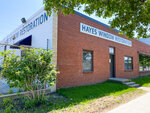
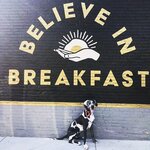
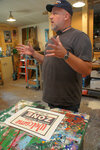
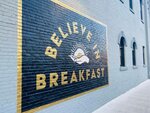

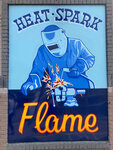
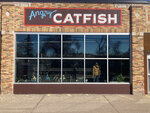
Comments
No comments on this item Please log in to comment by clicking here